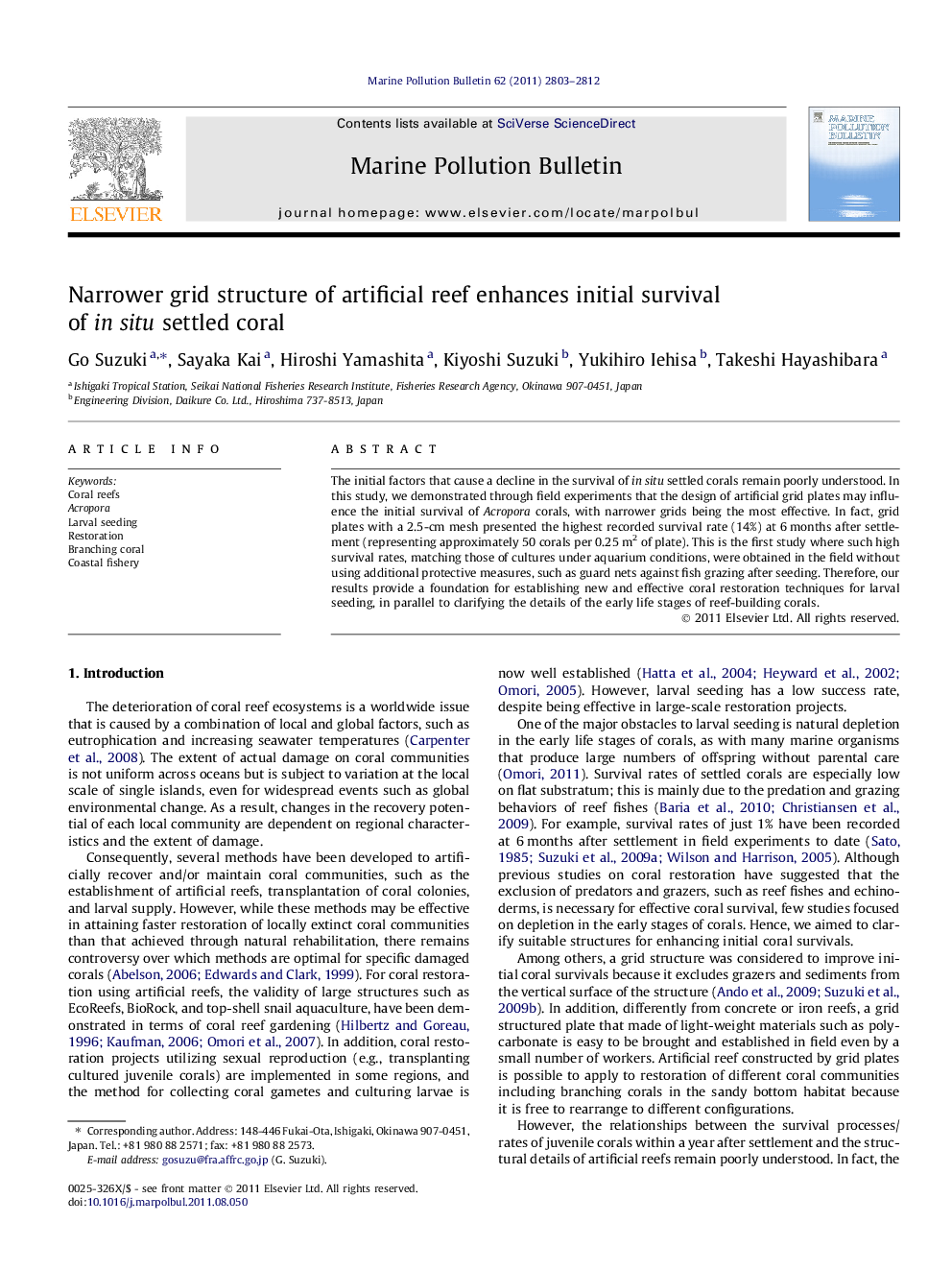| Article ID | Journal | Published Year | Pages | File Type |
|---|---|---|---|---|
| 6361115 | Marine Pollution Bulletin | 2011 | 10 Pages |
The initial factors that cause a decline in the survival of in situ settled corals remain poorly understood. In this study, we demonstrated through field experiments that the design of artificial grid plates may influence the initial survival of Acropora corals, with narrower grids being the most effective. In fact, grid plates with a 2.5-cm mesh presented the highest recorded survival rate (14%) at 6Â months after settlement (representing approximately 50 corals per 0.25Â m2 of plate). This is the first study where such high survival rates, matching those of cultures under aquarium conditions, were obtained in the field without using additional protective measures, such as guard nets against fish grazing after seeding. Therefore, our results provide a foundation for establishing new and effective coral restoration techniques for larval seeding, in parallel to clarifying the details of the early life stages of reef-building corals.
⺠The survival rate of in situ settled corals was highest on the 2.5-cm grid reef. ⺠The survival rate of in situ settled corals was higher on horizontal plates. ⺠Expected depletion factors were fish grazing and high light intensity.
